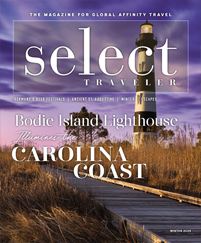Years ago, Kay Baker was the bank club director for a group called the Butterflies.
“Can you imagine any man getting on a motorcoach with a group called the Butterflies?” said Baker, director for the Southwest Club at Southwest Bank in Fort Worth, Texas, with a laugh.
“Indeed, most men wouldn’t travel with us, and if they did, they called themselves the Barflies.”
Because of her experience, Baker learned that she couldn’t underestimate the importance of a bank group name. “After the Butterflies, when I went to a bank where the name did not connote age or sex, we had a transition that happened almost overnight. Not only did we have mostly couples, but a variety of age groups.”
Probably not a good idea
It is common knowledge in the business world that a name, sometimes referred to as a brand, is crucial. We need only think about our own choices in life, whether it be products at the grocery store, our favorite sports team or even the cell phone in our pocket, to realize the value in a name. The experts know that if a brand is not easily identifiable and does not create a desired image and promote loyalty, no matter how worthy the products or services might be, it will fail in its job to encourage profits.
Naming and renaming bank groups have been hot topics for years. Twenty years ago, most clubs relished their identities as senior groups that consisted mostly of women and named their groups appropriately. Today, many of those titles still exist.
It is a subject of debate whether to change those names to attract the baby boomers who, as everyone knows, never want to see themselves as old-timers or to keep those trademarks that historically have a soft spot with not only many bank members but some bank directors. Barbara Yobski, director of the Soy Travel Club in Decatur, Illinois, is one of those soft-hearted directors.
“I once led a group called the Classics, and while the name might have inferred a senior group, I thought it had a distinctive ring to it and reflected class and wealth,” Yobski said.
Suzie Glisson, director of Prime Time at Jacksonville Savings Bank in Jacksonville, Illinois, is one who is not a big fan of her 17-year-old group’s name and goes so far as to not use it in radio ads or even in conversation.
“I simply refer to our travels as ‘activities sponsored by Jacksonville Savings Bank.’ Boomers are offended by names that reflect old age, and while 80 percent of our travelers are couples, and I feel we are a very successful group, we still have trouble getting younger people to participate. Perception is reality.
“People say to me, ‘Oh, you’re the person who takes old people on trips.’ And yes, we are thrilled to have many older people on our travels, but we are so much more than that. We have to get away from the antiquated ‘little old ladies on the bus’ reputation. For sure, I am in the process of trying to change our name,” she said.
Another bank director who asked not to be identified is also hoping to change her group’s 25-year-old name. “So much has changed in group travel in 25 years. While we have trouble getting boomers on the coach because of our name, once they do join us, they see how relaxing, how much fun and how free-spirited our trips are,” she said.
Both women agreed that changing their group’s long-time trademark is easier said than done. “Besides the mental adjustment, napkins, stationery and more would have to be changed. But we’ll get there eventually,” said Glisson.
Don’t let change give you the butterflies
For those who are considering a name change, the benefits may outnumber the hurdles, according to Cheryl Thorne, director of First State Bank Vista, a 27-year-old bank group at First State Bank in Mendota, Illinois. In January 2009, Thorne changed her group’s name from WAY 55, an acronym that meant “We Appreciate You,” to Vista.
Thorne explained, “Before that it was WAY 62, so we’ve come a long way. And, while it did take some work to change the brand, it was certainly worth it, as we simply were not the kind of group that name implied. We all know there is a stigma with age, as well as group travel, and we wanted to get over both hurdles. So we have not only changed our name, but we offer all kinds of travel to people of many ages.
“There are no cookie-cutter trips here, and we offer all kinds of hands-on experiences. I try to hit every level of this group, from those who don’t want to be away from their doctors, to those younger folks who can only get away for a few days, to those who want to enjoy zip lining and crab fishing on a 12-day excursion to Alaska.”
As a result of changing its name and offering a variety of travel, including high adventure, Thorne’s group has increased from 645 members to more than 1,800. “Our group, regardless of age, is a lively bunch. We just sold out a Chicago Cubs trip in 18 minutes,” Thorne said.
Creating a new identity
Interestingly, Thorne’s group’s name is an acronym that stands for “Very Important Seniors Traveling About,” but Thorne remains confident that customers don’t interpret Vista as simply a senior group. “We gave much thought into our name and even researched the Internet in order to officially trademark it,” she said.
Just a quick glance at Bank Travel club names shows that many, like Baker’s Southwest Club and Yobski’s Soy Travel Club, offer name identification with their banks. “I appreciate that since we don’t have any age limit on our group, our title simply offers a strong tie to the bank itself,” said Baker.
Yobski agreed. “Soy is not only the name of our bank but reflects the farming spirit of this area. This bank is very involved in the community, and employees are even asked to spend time on community projects. And this community is all about soybeans and corn. Come September, the only conversation in town revolves around the price of crops,” said Yobski.
Bank leaders who are thinking about a name change will want to spend time considering all their options, perhaps conducting studies via focus groups and polls with customers, management and the community. Simple searches on the Internet regarding name brands are also helpful.
Thorne added this encouragement: “I changed the name for the sole purpose of telling people what we’re all about. The result has been extremely successful.”









